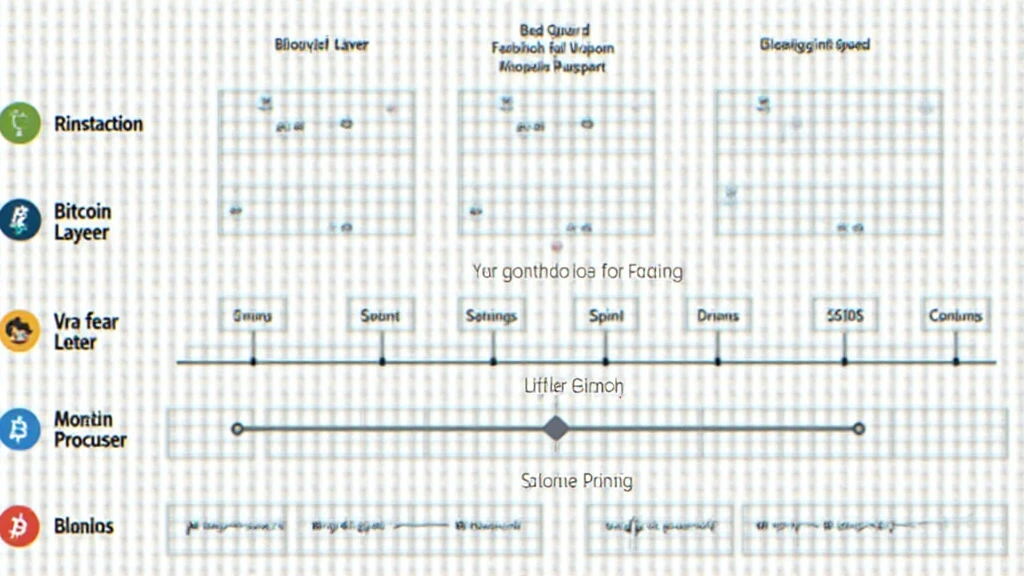Introduction
In recent years, the cryptocurrency landscape has evolved dramatically, with Bitcoin leading the charge in the adoption of blockchain technology. However, with increasing vulnerabilities and scalability challenges, developers and enthusiasts are now focusing on Bitcoin Layer solutions. With a staggering $4.1 billion lost to DeFi hacks in 2024, it becomes evident that focusing on robust and secure layers is essential for the cryptocurrency ecosystem’s sustainability.
What is Bitcoin Layer?
Bitcoin Layer, often referred to as Layer 2 solutions, seeks to address some of the limitations of the Bitcoin network. The original Bitcoin blockchain has proven to be cumbersome at times, often leading to slow transaction speeds and high fees during peak usage times. In essence, Bitcoin Layer acts as an additional layer atop the original Bitcoin blockchain, enabling faster transactions and greater scalability.
- Enhanced Scalability: By utilizing off-chain transactions, Bitcoin Layer increases transaction throughput.
- Lower Transaction Fees: Users experience reduced fees during transactions, making Bitcoin more accessible to everyday users.
- Increased Speed: Transactions can be confirmed much faster compared to the base Bitcoin layer, enhancing user experience.
Popular Bitcoin Layer Solutions
There are several Bitcoin Layer solutions already gaining traction. Notable examples include:

The Lightning Network
The Lightning Network is one of the most discussed Layer 2 solutions for Bitcoin. It allows users to open payment channels with one another, enabling instant transactions without recording each transaction on the main Bitcoin blockchain.
- Instant Transactions: Transfers between parties can occur in real-time.
- Microtransactions: The network supports micropayments, which are vital for content creators and service providers.
Sidechains
Another concept is the use of sidechains. A sidechain is a separate blockchain that is attached to the main Bitcoin blockchain. Funds can be transferred between the two chains, allowing for experiments and custom functionalities without affecting the Bitcoin network.
- Flexibility: Developers can create specific applications and tools that may not be feasible on the Bitcoin blockchain alone.
- Security: Sidechains can also enhance security measures for transactions and smart contracts.
Benefits and Challenges of Bitcoin Layer
Implementing Bitcoin Layer systems brings numerous advantages, yet it also introduces a set of challenges that developers and users must navigate. Here’s a breakdown:
Benefits
- Operational Efficiency: By reducing transaction times and costs, Bitcoin Layer solutions streamline crypto transactions.
- Wallet Compatibility: Most Bitcoin wallets are adapting to be compatible with Layer 2 solutions, ensuring user-friendliness.
- Broader Acceptance: With enhanced features, Bitcoin is moving closer to mainstream adoption in various sectors.
Challenges
- Complexity: Implementing layers adds a level of complexity that may be daunting for novice users.
- Security Risks: While mostly secure, Layer 2 solutions can present their own vulnerabilities, such as being targets for hacks.
Security Standards and Compliance
As the landscape of Bitcoin Layer evolves, adhering to security standards becomes paramount. According to a recent report by Chainalysis, over 80% of users are concerned about the security of their assets. Here are some recommendations for ensuring protocol security:
- Regular Audits: Conduct regular security audits on your chosen Bitcoin Layer protocol.
- Smart Contract Protection: Utilize platforms to verify and protect smart contracts, like CodeAuditor and others.
Bitcoin Layer in Vietnam
As the cryptocurrency market expands globally, Vietnam has emerged as a significant player. The number of cryptocurrency users in Vietnam has grown by 75% in the past two years. Here’s how Bitcoin Layer solutions are impacting this emerging market:
- Increased Accessibility: With lower fees and faster transactions, more Vietnamese are entering the cryptocurrency market.
- Innovative Use Cases: Local businesses are beginning to adopt Bitcoin Layer solutions for e-commerce and service-related transactions.
Incorporating keywords like tiêu chuẩn an ninh blockchain naturally enhances understanding for local users.
Conclusion
In summary, Bitcoin Layer solutions present a pivotal shift in the world of cryptocurrency, offering benefits that could redefine transaction methodologies. As we progress into 2025 and beyond, the potential for Bitcoin Layer technologies to bridge accessibility gaps and enhance security will be critical. Staying informed about developments in Bitcoin Layer is necessary for both experienced investors and newcomers alike. Remember, this article does not constitute financial advice, so consult local regulators to ensure compliance with laws in your jurisdiction. For further insights, follow officialcryptonews!




